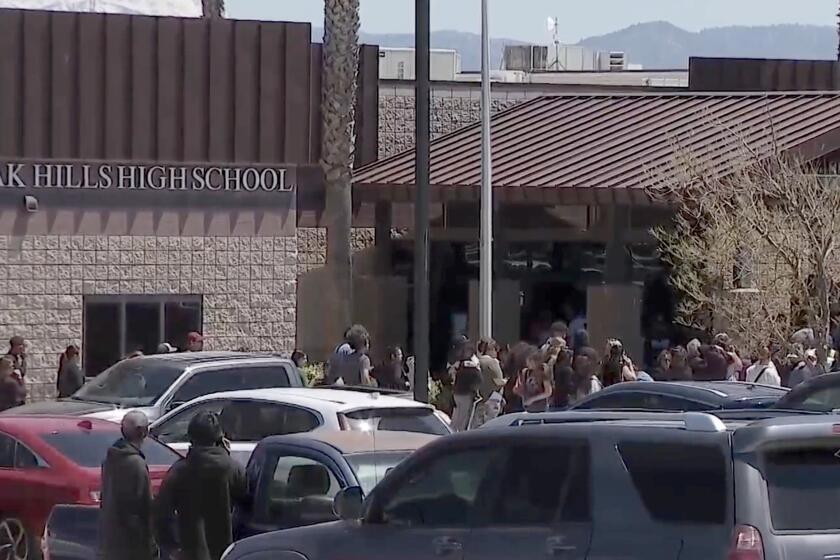Bullet trains won’t get us anywhere
THE MAIN problem with Gov. Arnold Schwarzenegger’s 2007-08 budget proposal to cut funding for the California High-Speed Rail Authority is that it does not go far enough. Instead of eliminating 90% of the agency’s funding, he should shut the thing down permanently.
The bond measure to pay for the first leg of the rail system, first set for the 2004 ballot but delayed twice by the Legislature, should be removed from the 2008 ballot and canceled. Public resources would be better spent on just about anything else, including delta levies, roads, prisons and schools.
The rail authority wants to link Sacramento and the San Francisco Bay Area to Los Angeles and San Diego by building a rail system for trains traveling at more than 200 mph. Established in 1996 and made a permanent agency in 2002, it has worked to convince politicians and voters that a bullet train is a viable alternative to building more roads and airports.
Unfortunately, the system’s financial plan is weak. A Federal Transit Administration review of urban rail projects in such cities as Miami, Baltimore, Atlanta and Washington, released in the early 1990s, shows that cost and ridership estimates issued by public agencies are invariably too optimistic. Given the exceptional scope of its plan, the high-speed rail authority’s figures appear to be no exception.
Even if the cost of precision, high-technology railways running hundreds of miles — routed through tunnels under mountain ranges and grade separated at more than 1,000 intersections — did not exceed the $40 billion the authority projects, the system would never recoup its capital costs through fares and fees. To do that, the fare for a ride on the mythical bullet train would have to be about twice as high as that for an average-priced ticket on a commercial aircraft. Transportation that is slower — and more expensive — than aircraft cannot compete with aircraft.
Europe has a high-speed rail system that out-competes cars and planes for trips ranging from 120 miles to 230 miles, but there are good reasons for that. Gasoline prices in Europe are, at a minimum, twice those in California. Airline deregulation came late to Europe, making it more expensive to fly in those countries. More Americans than Europeans use their cars to make trips longer than 300 miles, and more Americans than Europeans board low-cost jets to travel to destinations less than 500 miles away. Even with environments better suited to high-speed rail service, the Japanese and Europeans still have to subsidize their systems.
The 2004 train bombings in Madrid demonstrate a lethal point: Trains are a security nightmare. The safe operation of a high-speed train system requires securing the entire right of way. The 2005 Metrolink crash near Glendale was caused by a Jeep Cherokee deliberately parked on the tracks at an intersection. We do not have the means to secure rail rights of way adequately in the Los Angeles area, much less for a new statewide network. Airplanes are secured at airports. Once they are in the air, security problems are virtually eliminated.
California’s population growth and strong economy may eventually overtax the capacity of its airports, but airports are much cheaper to build or expand than a high-speed rail network. A new, top-of-the-line airport might run about $10 billion. A substantial increase in capacity at LAX would cost about the same, but $5 billion would buy a lot of airport in Palmdale because land there is cheaper.
If airport congestion became acute, airfares would rise, which would effectively curb air-travel demand in the short term. Eventually, though, the day will come when regional and national interests will require greater airport capacity, and cities and counties may have to use eminent domain to expand their metropolitan airports. If we feel civic guilt about this, displaced residents should receive a premium above market value for their property. Such generosity would still cost only a small fraction of a statewide high-speed rail system.
More to Read
Start your day right
Sign up for Essential California for news, features and recommendations from the L.A. Times and beyond in your inbox six days a week.
You may occasionally receive promotional content from the Los Angeles Times.





